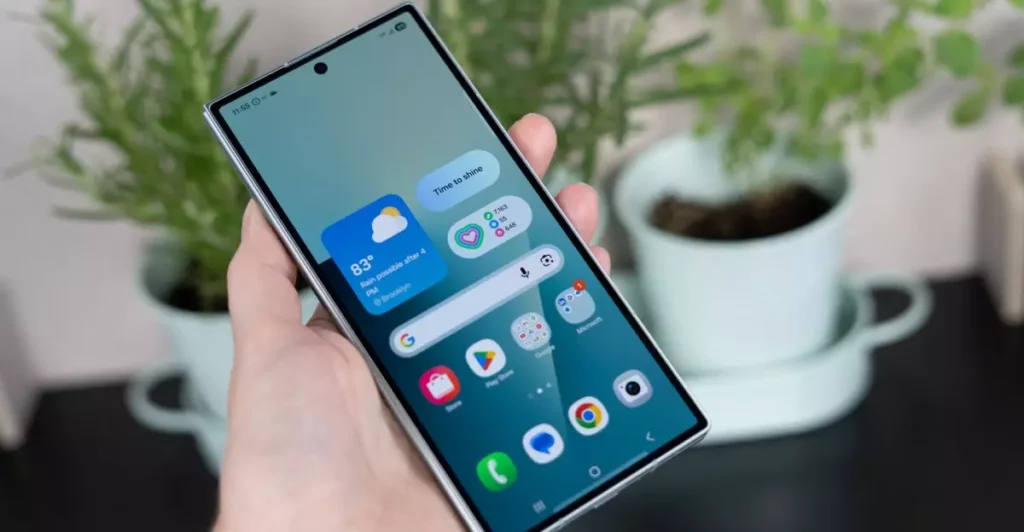The Galaxy Z Fold 7 symbolizes Samsung’s relentless pursuit of redefining mobile boundaries, yet beneath this veneer of innovation lies a troubling pattern: technology increasingly resembles a high-stakes gamble rather than a genuine upgrade. The device’s slim profile at 8.9mm champions the elegance of engineering but disguises a core issue—foldables remain fragile, overpriced luxuries designed more for early adopters and prestige rather than everyday reliability. While aesthetic improvements like the larger external screen and seamless fold are impressive, they don’t address fundamental concerns about durability and practical utility. The focus on making foldables thinner and sleeker often results in compromises that sacrifice longevity, leading one to question whether these devices are genuinely future-proof or more symbolic status symbols. Samsung appears to prioritize form over function, risking a market flooded with fragile gadgets that succeed temporarily on appearances but fail in durability, raising the stark reality that “innovation” often comes with a hefty price tag and questionable longevity.
Price as a Barrier: The Myth of Accessibility in Premium Technology
No matter how enticing the promotional deals and trade-in offers, the starting price of $1,999 remains an insurmountable barrier for most users. Samsung’s strategic use of rebates and carrier deals — sometimes seemingly complex and opaque — merely mask the stark reality: foldable phones are a luxury, not a necessity. The splashy discounts, trade-in credits up to $1,000, and installment plans are clever marketing tools designed to create a perception of affordability, but they also serve to entrap consumers into long-term service commitments. These tactics undermine the principle of true market accessibility. The price tag fosters a divide, relegating foldables to the realm of the elite, effectively turning innovation into an exclusivity club that only the affluent or early tech enthusiasts can afford to join easily. The short-term discount strategies may temporarily boost sales, but they do little to justify the device’s premium cost in terms of real value or longevity.
The Trade-in Game: Pros, Cons, and Deception
Samsung’s aggressive trade-in campaigns and carrier incentives are double-edged swords. While they incentivize early upgrades and entice consumers to shift to foldable technology — with credits up to $1,100 over three years — they also deepen the dependency on ongoing service contracts and brand loyalty at the expense of genuine consumer choice. This model perpetuates a cycle where consumers are subtly coerced into long-term commitments, often with restrictive eligibility and hidden conditions. Such strategies echo a broader industry trend: using complex financial arrangements to offset initial costs but ultimately locking the user into recurring spending and less flexibility. Moreover, these incentives can distort the perceived value of the product, making it appear more accessible than it truly is, thus creating a false sense of affordability for a device that still demands significant commitment.
The ‘Normal’ Foldable: A Misleading Illusion
Samsung’s emphasis on the device’s “normal” appearance when folded is a clever marketing angle, yet it glosses over the larger issue: the foldable technology is still far from mainstream. Offering a device that looks like a typical smartphone on the outside might appeal to some, but it does little to dispel concerns about durability, battery life, and overall practicality. More importantly, the claim of “normalcy” diminishes the fact that the device’s core concept — a flexible, foldable screen — remains inherently fragile and expensive to repair. This emphasis on aesthetics over robustness may persuade early adopters, but it risks trivializing the core problem: a premium device that still encapsulates significant compromises. Instead of pushing for genuinely resilient foldables, Samsung feeds the illusion that foldability is just about sleek design, ignoring the critical engineering challenges that will determine whether these devices become truly practical.
The Reality Check: Is This Just Pricey Futurism?
Ultimately, the question arises: is the Galaxy Z Fold 7 worth its eye-watering price? For the passionate tech enthusiast or the corporate executive who needs multitasking power and can absorb the cost, the answer might be an enthusiastic yes. But for the pragmatic consumer, it’s a cautious no. Samsung’s strategy relies heavily on fostering a narrative of being on the frontier of innovation, yet this “future tech” often feels like an expensive misstep masked as progress. The device’s cutting-edge features, style, and promotional offers may create a fantasy of owning a device from tomorrow, but the tangible value remains elusive. The current market trend seems to prioritize creating a halo effect around foldables, branding them as essential upgrades, even when their real-life utility is still questionable. The truth is, the Galaxy Z Fold 7 exemplifies an industry poised between technological aspiration and economic impracticality—struggling to justify what is fundamentally a high-cost experiment in form over function.
The Future or a Fad? The Market’s Steady Skepticism
As much as Samsung and the industry push forward, skepticism remains justified. Foldables are a fascinating concept, but the economics, durability issues, and complex buying strategies often turn what could be revolutionary into a fleeting trend. In a sensible market, true innovation should reduce costs, improve reliability, and offer users more genuine value—not just the illusion of a device that can serve multiple roles. The current reliance on hefty promotional discounts, complex carrier deals, and high-stakes trade-ins signals a fragile market: one that is still testing the waters, hesitant to fully commit. The challenge ahead lies not just in perfecting the technology but in making it affordable and durable enough to replace traditional smartphones from a practical standpoint. Until then, the Galaxy Z Fold 7 remains an aspirational device — accessible only to those who can afford to play the high-stakes gamble of pioneering the future of mobile technology.









Leave a Reply